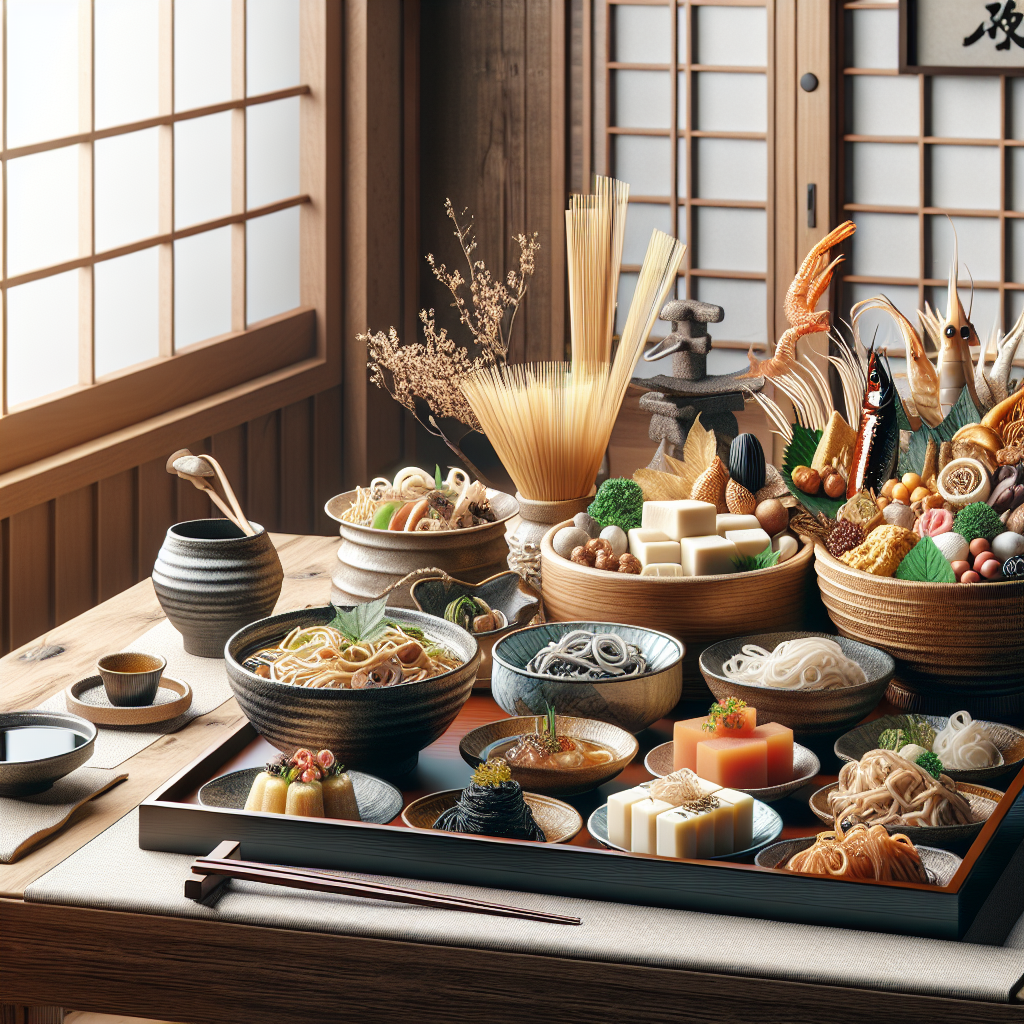Beyond Sushi: A Culinary Journey Through Japan’s Lesser-Known Delicacies
Japan, a country steeped in tradition and bursting with innovation, offers a culinary landscape that extends far beyond the familiar sushi rolls that have captivated the world. While sushi remains a quintessential symbol of Japanese cuisine, the country’s gastronomic offerings delve deep into a rich tapestry of tastes and textures, many of which remain largely undiscovered by the global palate. This journey takes us beyond sushi, exploring Japan’s lesser-known delicacies that promise to intrigue and delight those willing to explore.
The Hidden Gems of Japanese Cuisine
1. Kaiseki Ryori
Kaiseki Ryori is the epitome of Japanese haute cuisine, a traditional multi-course meal that harmonizes taste, texture, appearance, and colors of food. Originally associated with the tea ceremony, Kaiseki is a culinary art form that emphasizes seasonal ingredients, meticulous preparation, and exquisite presentation. Each course is a testament to the chef’s skill and creativity, offering a unique insight into Japan’s culinary culture.
2. Okonomiyaki
Often described as a Japanese savory pancake, Okonomiyaki is a delightful mix of batter and cabbage, cooked on a griddle and customized with a variety of ingredients such as seafood, pork, or cheese. This dish is particularly popular in Hiroshima and Osaka, each city offering its distinctive style. Okonomiyaki is a testament to the Japanese philosophy of “okonomi,” meaning “as you like,” inviting diners to tailor the dish to their personal taste.
3. Unagi
Unagi, or freshwater eel, is a summer delicacy in Japan, revered not only for its rich, bold flavor but also for its supposed stamina-boosting properties. Glazed with a sweet and savory sauce and grilled to perfection, unagi is typically served over rice in a dish known as Unadon. This delicacy is a sumptuous treat that encapsulates the depth of Japanese culinary finesse.
4. Yuba
Yuba, or tofu skin, is a delicacy originating from Kyoto, the heart of traditional Japanese cuisine. Made from the skin that forms on the surface of boiled soy milk, yuba is prized for its delicate texture and versatility. It can be enjoyed fresh, dried, or rehydrated, serving as a testament to the Japanese ability to transform simple ingredients into exquisite dishes.
5. Mochi
While Mochi is becoming increasingly known outside Japan, many of its traditional and seasonal variations remain underexplored. This sticky rice cake can be found in numerous forms, from the sweet, bean-filled Wagashi enjoyed during tea ceremonies to the savory, soy-sauce-glazed Mochi grilled over a charcoal fire. Each variant offers a unique taste experience, reflecting the diverse regional and seasonal flavors of Japan.
6. Fugu
Fugu, or pufferfish, is perhaps Japan’s most infamous delicacy, known for its potentially lethal poison if not prepared correctly. This dish is a testament to the Japanese pursuit of perfection and the culinary skill required to safely prepare it. Fugu can be served in various ways, including sashimi, hot pot, and even fried, each offering a delicate, slightly chewy texture that is highly prized.
FAQs
Q: Is it safe to eat Fugu?
A: Yes, when prepared by a licensed chef. Chefs undergo years of rigorous training to obtain a license to prepare and serve Fugu safely.
Q: What is the best season to enjoy Unagi?
A: Unagi is traditionally eaten during the summer, especially on the Day of the Ox in mid-July, to beat the summer heat and boost stamina.
Q: Can vegetarians enjoy Japanese cuisine?
A: Absolutely. Japanese cuisine offers a wide range of vegetarian options, from the vegetable-centric dishes of Shojin Ryori (Buddhist cuisine) to modern adaptations like vegetable sushi and tempura.
Q: How do I experience Kaiseki Ryori?
A: Kaiseki meals are best experienced at specialized restaurants or ryokans (Japanese inns) where the setting complements the seasonal and artistic nature of the cuisine. Reservations are often required.
Q: Are there any lesser-known Japanese desserts I should try?
A: Beyond Mochi, Japan offers a plethora of sweets like Dorayaki (red bean pancake sandwich), Manju (steamed cake filled with red bean paste), and Sakuramochi (cherry blossom-flavored rice cake), each offering a glimpse into Japan’s sweet culinary traditions.
Exploring Japan’s culinary landscape reveals a world far beyond sushi, filled with an array of flavors, textures, and experiences. From the artful complexity of Kaiseki Ryori to the simple pleasure of a perfectly grilled piece of Unagi, Japanese cuisine invites diners to explore and appreciate its depth and diversity. As we journey through Japan’s lesser-known delicacies, we not only expand our palates but also deepen our understanding of a culture that has turned food into an art form.
